OPINION
The collapsing Western front against Russia: Ukraine and Israel
Published
on
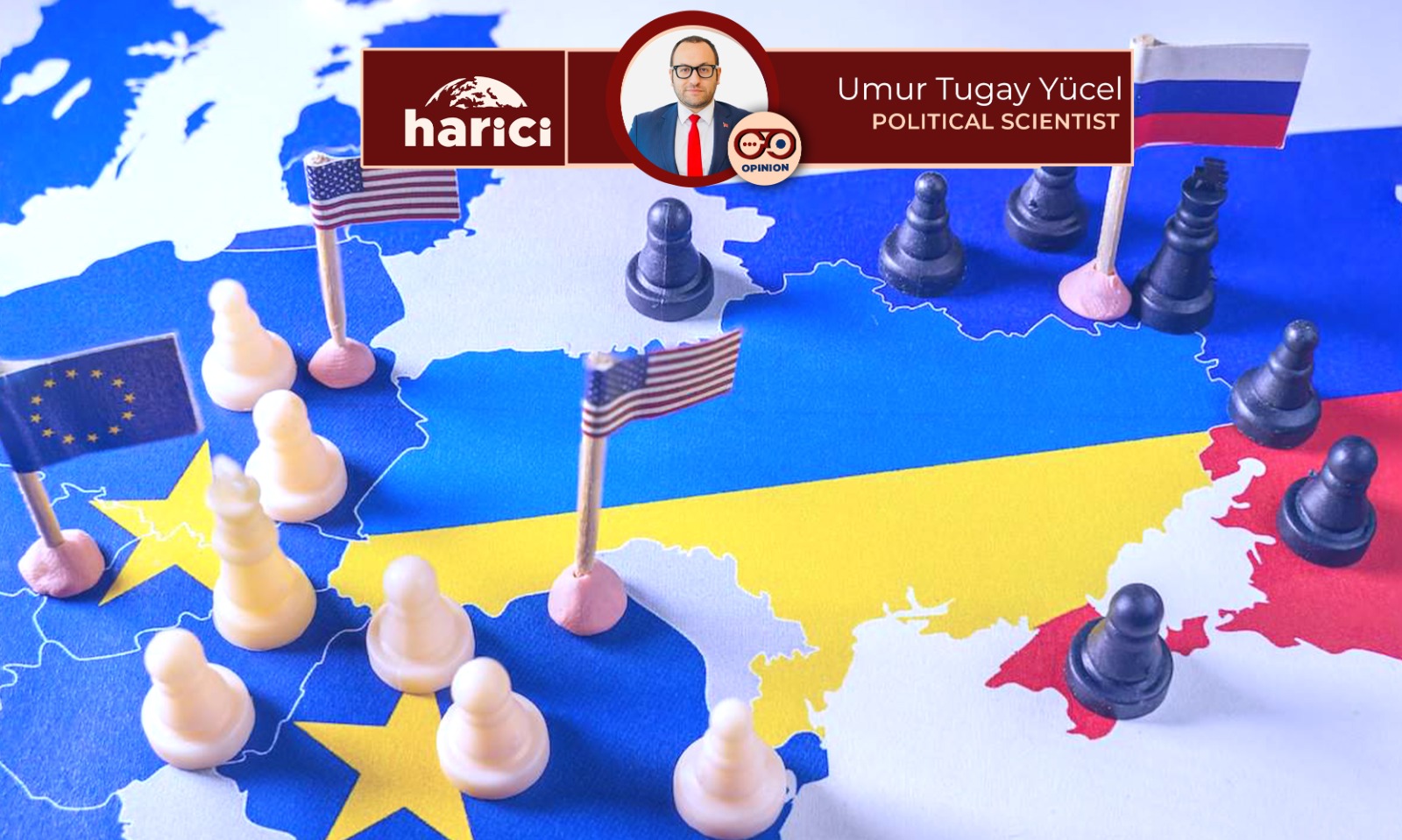
German Chancellor Olaf Scholz has stated that ‘Israel’s security is a matter of national security for Germany’.
However, Russian President Vladimir Putin cannot make the same claim regarding Ukraine, a neighbouring country with a shared language, religion, and history.
US President Joe Biden has expressed that ‘If Israel did not exist, we would have to invent it’.
Chinese President Xi Jinping cannot consider unification with Taiwan, which is located nearby. He cannot even acknowledge that Taiwan is part of China and a matter of national security.
NATO Secretary General Jens Stoltenberg stated, ‘We are not approaching China. China is moving towards the West.’ He may view China’s trade and diplomatic relations as a threat to NATO, but he does not perceive the opening of the NATO Japan Office in Asia as a threat. He also does not believe that NATO has been moving aggressively towards Russia for years.
While Israel, located thousands of kilometres away, may be a national security concern for the US and Germany, terrorist organisations in Iraq and Syria are not a national security concern for Turkey.
The US and EU countries put their rhetoric into action. The US, EU, and NATO are involved in a conflict with Russia in Ukraine, while providing financial and military support to Israel in Gaza. It is important to note that Western values, norms, rules, and laws are applied differently in Ukraine and Israel. It is worth mentioning that Western countries have imposed 18,000 sanctions on Russia alone. Putin has been accused of war crimes. However, it appears that the same system of law, rules, values and norms were not applied to Israel and Netanyahu. Finally, the last sentence could be rephrased to avoid sweeping generalisations and to provide a more balanced perspective. It is important to note that the following statement is a subjective evaluation: ‘The theses expressed by the West for years as Russian aggression have collapsed today as a result of the genocide committed by Israel with the weapons provided by the West.’ Therefore, it should be either removed or clearly marked as an opinion. Additionally, the text contains biased language and should be revised to maintain objectivity. Latin Americans, Africans, Asians, and even Europeans recognise the perceived hypocrisy of Western governments’ support for Israel. The loss of trust and credibility in the Middle East due to the West’s global immorality has undoubtedly benefited the BRICS and BRICS countries. Non-Western countries such as Turkey, Russia, China, Brazil and South Africa have become spokespersons for humanity, conscience and law, while the US and the EU have not. Even BRICS, which gathered for Gaza, took a political position and made a political comment for the first time. The conflicts in Ukraine and Gaza have had differing effects on global integration. While Europe has become more closely aligned with the USA, Asia, Africa, and Latin America have experienced accelerated integration in various ways. During its most recent summit, the African Union expressed solidarity with the people of Gaza and called for a ceasefire, a call that was not heeded by the US and Europe.
The postponement of Ukraine’s ‘Peace Summit’ from 2023 to 2024 was due to the US and EU prioritising Israel over Ukraine. Ukraine’s unsuccessful counter-offensive in 2023 raised concerns. The failure of the offensive was a strategic setback for the US, the EU, and NATO, as it was funded by the West and carried out with Western resources and Ukrainian soldiers. Today, Ukraine is a country that is heavily dependent on the US and Europe, which has led some to view it as a colony. However, it is important to avoid making subjective evaluations without clear evidence to support them.
Russia and Putin remain respected in the non-Western world. This was evident in the warm welcome Putin received from traditional US allies Saudi Arabia and the United Arab Emirates. It is noteworthy that a leader who is alleged to be a war criminal and a declared arch-enemy of the US is respected and trusted in the Gulf. King Salman even described Putin as ‘a special and very valuable guest of the Kingdom and its people’. It is important to note that several Arab leaders contacted Russian leader Putin regarding Israel’s attacks on Gaza, and Netanyahu also had a meeting with Putin. While Putin provided diplomatic and economic support to the Muslim world, Ukraine, led by Zelenski, supported Israel. It is worth mentioning that Hamas was hosted in Moscow. It is clear that Russia could not be isolated and weakened; on the contrary, Putin strengthened his power. On the domestic front, the leader of Wagner, Prigojin, who is affiliated with the Russian army, and the oppositionist Navalny, who has been accused of racism, are no longer in the picture. As for external affairs, Tokayev, the leader of Kazakhstan, which has recently been designated as a strategic partner by the West, stated that ‘Putin and Russia remain leaders and a country that shapes the global agenda. Russia’s perspectives are taken into account worldwide, and no issue can be resolved without Russia.’ India, which the US and the West see as a potential ally against China, stated that ‘Russia is a reliable and valuable partner’. The Indian Foreign Minister even described Russia as a powerful player in the multipolar world.
Over the course of two years of war and sanctions, the Russian state, people, economy, and army have demonstrated their endurance and resilience. The language used in this text is clear, objective, and value-neutral, with a formal register and precise word choice. The text adheres to conventional structure and formatting features, including consistent citation and footnote style. It is grammatically correct and free from errors in spelling and punctuation. It should be noted that subjective evaluations have been excluded from this assessment. Meanwhile, the US and the EU have grown weary in their dealings with Ukraine, while the Russians have become more dynamic. No changes in content have been made, as per the instructions provided. Additionally, Russian military power was on display in South Africa, the United Arab Emirates, and Saudi Arabia during the ongoing conflict. Despite the war and sanctions, the Russian military industry continued to make arms deals. Additionally, Russia participated in military exercises worldwide while fighting the war. No changes in content have been made. It is evident that the Russian war machine has successfully developed, transformed and renewed itself, achieving both military and psychological superiority. It is important to note that this text has been edited for objectivity, comprehensibility, conventional structure, clear and objective language, format, formal register, structure, balance, precise word choice, and grammatical correctness. Despite claims of stagnation and fatigue at the front, the Russian army continues to advance. Russia has taken military initiative and is preparing for Odessa and the Black Sea coast. Western authorities claim that the Russian army is one of the most experienced and combat-ready in the world. Furthermore, the war in Ukraine has led to Russia’s military ammunition production surpassing that of the EU as a whole. Russia has become a critical production power, particularly in artillery ammunition and missiles. It appears that NATO underestimated Russia’s military production capacity, which was a significant mistake. Despite the war and sanctions, Putin’s Russia has achieved great success in terms of wage growth, low unemployment, social support, inflation control, and war financing. In 2023, the Russian economy grew more than that of the US and European countries. Russia has become a model country for nations and states worldwide in the fight against sanctions. Despite the ongoing war, Russia has sent thousands of tons of grain to African countries, and Europe continues to receive Russian grain. Additionally, Russia has provided aid to Gaza.
Regarding Gaza, it is reported that nearly 30,000 people were killed in a period of four months, with 12,000 of them being children and 8,000 being women. The number of wounded is close to 70,000, with the majority being non-combatants. Additionally, numerous mosques and schools were destroyed, and there were reports of UN officials and journalists being killed. In comparison, during the two-year Russian-Ukrainian war, 10,582 civilians were killed, with only 500 of them being children. The number of wounded was around 20,000. Israeli aggression and brutality continue in front of the eyes of the whole world with the support of Western countries. The story of Russian aggression, however, turned out to be untrue. Even Pope Francis, while declaring that Israel is using terror tactics in Gaza, did not accuse Russia of any such thing. The Vatican Secretary of State said that Francis did not want to be seen as the ‘Vicar of the West’ on Ukraine. It was stated that Pope Francis would be a neutral figure in a globalized and multipolar church. However, regarding Israel, it appears that he has taken a clear stance.
Our Western partners, who are not as good as the Pope, frequently publish critical and accusatory reports about prisons in non-Western countries, particularly Turkey. However, there are no reports about the thousands of Palestinians in Israeli prisons who have committed no crime. It raises the question of where Western law, values, and rules are. Israel is holding 5,000 Palestinians in prison without trial,yet there is no mention of them in the US and EU reports.Israel’s attacks in Lebanon and Syria, in addition to its attacks on Gaza, violate international law. Either North Korea or Israel can be considered a rogue state, as they both have a history of attacking their neighbors, arresting people without question, and causing harm to innocent civilians. Israel’s aggression and destructiveness contradict its portrayal as a model country in the Middle East. This photo reveals the true face of the US and the EU, who view themselves as models of law and values, but are complicit in this savagery.
Recently, the Putin interview conducted by American journalist Tucker Carlson was watched more than 200 million times on X. Unable to digest this, the EU demanded sanctions against the American journalist. Speaking of the EU, for the first time the IMF contradicted itself by giving a loan to a country at war, namely Ukraine. More interestingly, the EU decided to officially open membership talks with Ukraine and Moldova, while granting Georgia candidate country status. One should not doubt that these are political decisions. Because it is contrary to EU law, values and customs for these countries, which do not meet any of the EU criteria, to enter the membership process with the EU in a hurry. Yet Turkey, which fulfills many criteria, has been kept waiting for 50 years. Worst of all, EU member Hungary was threatened with the destruction of its economy by the EU for exercising its legitimate veto right on Ukraine. Even the EU legal system shows the gravity of the situation.
The Russian narrative highlights the West’s hypocrisy, unilateralism, and lack of compassion. The US and the EU’s refusal to agree to a ceasefire in Gaza and Ukraine is concerning, especially as Israel continues to bomb UN facilities and kill UN workers, which are supposed to be inviolable. It is alarming to see the Western international system and organizations powerless in this situation. Additionally, Israel has not complied with any of the 1,000 resolutions adopted by the UN so far. The US and the EU have always supported this, but their support has been so dogmatic and conservative that students from Harvard, Pennsylvania, and MIT were prosecuted for protesting against the events in Gaza. The rectors who authorized these protests were even called to testify before Congress, and one had to resign. This is the current situation in the US, a country that speaks of freedom, human rights, and peace. The Israeli attacks on Gaza have highlighted the abuse of values such as human rights, democracy, freedom and equality by the US and the EU for years. Western countries and civilization have long presented their geography, values, rules and laws as a paradise and a goal to be achieved. However, the Western proxy war in Ukraine and the genocide in Gaza have clearly shown that this is not the case. The US lost its global deterrence in Ukraine and its credibility in Gaza. Trump, who is running for President again, claims that the US is in decline as a superpower, while Russia is a war machine that defeated Napoleon and Hitler. It is important to note that the improved text closely follows the source text and no new content has been added. In a recent article, CIA Director William Burns stated that the US no longer has undisputed superiority.
The impenetrable Russian defense has proven to be too strong for the Western weapons, money, perception, and resistance. In Ukraine and Israel, Western values, rules, and law have failed.
You may like
-


AfD aims to expand influence in European Parliament
-


Hamas approves Egypt’s new ceasefire proposal
-
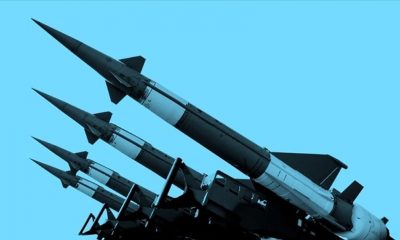

Calls for German nuclear armament grow louder
-
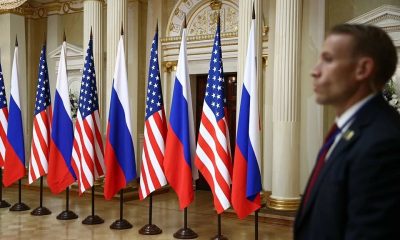

US expresses optimism after Riyadh talks with Russia
-


BYD sales surge 29% on robust hybrid demand in China
-
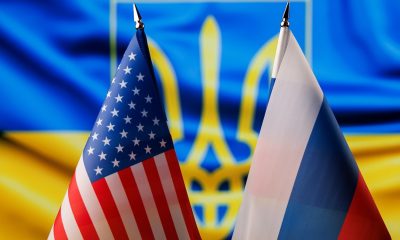

US proposes Black Sea truce to Russia in Saudi Arabia talks
OPINION
The Houthi War: The “Sixth Middle East War” and the Palestinian Narrative
Published
2 days agoon
25/03/2025By
Ma Xiaolin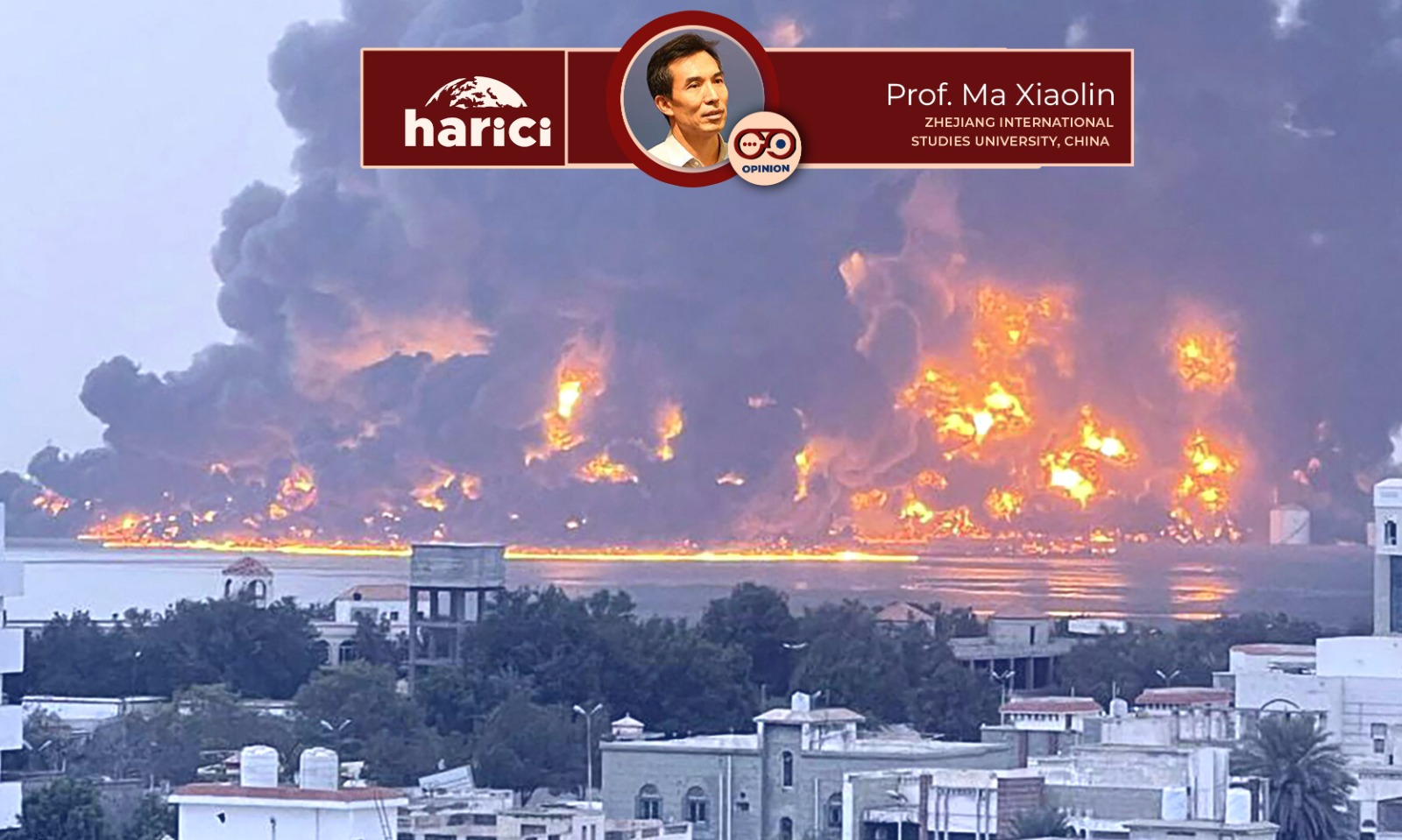
At 11:00 p.m. local time on March 20, I boarded Yemen Airways flight IY647, which took off in the rain from Queen Alia International Airport in Amman, the capital of Jordan. Meanwhile, air raid sirens were once again sounding in Israel to the west, as it was reported that the Yemeni Houthi forces had launched missiles at Tel Aviv, Israel’s largest city, which were successfully intercepted. More than two hours later, the Boeing aircraft carrying nearly 200 passengers flew at low altitude over the brightly lit Yemeni capital, Sana’a, and landed safely. Our local hosts drove us through long city roads to finally settle at the Shaba Hotel. With Ramadan more than halfway through, this mysterious Arab capital at the frontlines of war was at its liveliest and most bustling time of day. There were no signs of war — perhaps the night had masked the smoke and devastation of the battlefield. On the surface, the infrastructure in Sana’a appeared so outdated that it reminded me of Gaza, Palestine, where I was stationed 25 years ago.
In the early morning of the 21st, the Houthi forces claimed they had launched a “Palestine-2” hypersonic missile at Israel the previous day, successfully striking a military target south of Tel Aviv. It’s truly surprising that the Houthis — often dubbed the “slipper army” — are now capable of producing hypersonic missiles themselves. It’s a testament to the rapid advancement and widespread accessibility of modern technology. What was once exclusive to major world powers no longer holds a monopoly, evoking the sense of “the swallows of yesteryear’s noble halls now nesting among common folk.”
Houthi spokesperson Yahya Saree emphasized that this was the second missile attack launched from Yemen on Israeli territory within 24 hours. Observers noted that this was also the Houthis’ first strike on Israeli soil following Israel’s renewed airstrikes and partial ground raids in Gaza — actions that have already caused nearly a thousand Palestinian deaths.
Just prior to the attack on Israel, the Houthis had engaged in a direct confrontation with the U.S. Red Sea fleet — again sparked by the Israeli-Palestinian conflict. On March 7, the Houthis warned Israel that if humanitarian aid restrictions on Gaza were not lifted within four days, they would resume attacks on ships entering or exiting Israeli ports through the Red Sea. This coincided with the second round of ceasefire negotiations between Israel and Hamas stalling. On the 10th, before the Houthi deadline expired, Israel preemptively announced a cutoff of electricity to Gaza to pressure Hamas. Consequently, the Houthis resumed their Red Sea ship attacks.
The Houthis’ support for Hamas and advocacy for the Palestinian cause naturally angered the U.S., which unconditionally backs Israel. Between March 15 and 19, under orders from President Trump, the U.S. launched its largest recent air assault on Houthi positions via the USS *Harry S. Truman* carrier group in the Red Sea, targeting their radar, air defense, missile, and drone systems. The strikes extended over Sana’a, the Red Sea city of Hodeidah, and the Houthi stronghold in Saada province near the western border. In response, the Houthis launched retaliatory missile and drone attacks against U.S. naval targets.
Amid all this, Israel swiftly resumed large-scale air and ground assaults on Gaza, reclaiming the “Netzarim Corridor,” which cuts off north-south traffic within the Gaza Strip. According to U.S. and Israeli media, Israel had informed the U.S. in advance of its plans to reignite conflict in Gaza and received open support from the Trump administration. Israeli Prime Minister Benjamin Netanyahu declared that the assault was “just the beginning.” With the renewal of conflict, the far-right factions that had exited Israel’s coalition government announced their return. Analysts believe Netanyahu is deliberately reigniting war to hinder the next phase of ceasefire talks, thereby preserving his fragile coalition, prolonging his political life, and avoiding accountability for the severe consequences of the Al-Aqsa Flood attack that had previously rocked Israel.
Before Trump returned to power, with Hamas and Hezbollah suffering heavy blows—especially after the unexpected fall of the Damascus regime—the geopolitical landscape of the Eastern Mediterranean underwent significant changes. The year-long “Sixth Middle East War” seemed to be nearing its end, and the focus of both sides in the Israeli-Palestinian conflict, the United States, the Arab world, and even the international community shifted toward the multidimensional reconstruction of Gaza. The Houthi forces even temporarily suspended their attacks on Israeli targets in the Red Sea region. However, the failure of the second round of ceasefire negotiations over Gaza and the outbreak of renewed fighting suggest that the “Sixth Middle East War” has not truly ended but has simply moved past an intermission and entered a new phase—with a change in the main battlefield and primary adversaries.
From Israel’s perspective, after more than a year of intense southern offensives, the Israeli military has essentially crushed Hamas. Following two months of focused campaigns in the north, it not only severely weakened Hezbollah but also unexpectedly caused the collapse of the Assad regime, leading to the complete fall of the northwest wing of the “Shiite Crescent.” The key goal of the third phase is to eliminate Hamas’s presence in Gaza entirely, and with the help of the United States, strike hard at the Houthis and Iran, both of whom strongly support Hamas.
From Hamas’s point of view, although it has lost most of its leadership and main combat forces, and the Palestinian people have paid a tremendous price, it has not lost its political foundation or its legitimacy in the struggle. Hamas remains the irreplaceable governing force in Gaza. After the first phase ceasefire, Hamas quickly mobilized thousands of police and security personnel to maintain public order—demonstrating its remaining strength and unwillingness to exit the political and historical stage. It is eager to remain in Gaza under the banners of “legitimate resistance” and the “Palestinian cause,” and participate in the political, security, and economic reconstruction of Gaza in this new era.
From the U.S. perspective, Trump does not want to be permanently tied to Israel’s war chariot. Yet, based on national interests, personal ties, and religious beliefs, he has no choice but to shield and support Netanyahu’s government and Israel. Therefore, Trump introduced the “Clear Gaza” plan to pressure the Palestinians and the Arab world. He has also launched heavy strikes on the Houthis to ease Israel’s burden, while publicly warning and threatening Iran—the so-called “ultimate backer”—in an attempt to end the Israeli-Palestinian conflict, cool down the Middle East, and ultimately reduce America’s involvement in the region.
From Iran’s perspective, the year-long “Sixth Middle East War” has led to two direct confrontations with Israel, nearly dragging the entire country into full-scale war. It has also seen severe setbacks for the twin geopolitical drivers of the “Shiite Crescent” and the “Axis of Resistance.” Iran has suffered a historic political and diplomatic defeat, with more than forty years of investment and influence—especially since the Arab Spring—lost almost overnight. This could undermine the legitimacy of its policies and governance. Over the past few months, Iran has maintained a hardline diplomatic stance—emphasizing support for Palestine and issuing warnings to Israel and the U.S.—which in turn has provoked Israel and the U.S. to “press their advantage” and try to defeat both the “Shiite Crescent” and “Axis of Resistance” through the Gaza war.
From the Houthis’ point of view, since their original goal was to establish an Iranian-style regime, they naturally adopted Iran’s political and diplomatic discourse. That means they must raise the Palestinian banner and align themselves with the Palestinian narrative to overcome the inherent disadvantages of being a Shiite militia. However, the Houthis also possess a level of confidence in their discourse that Iran lacks—because both Palestinians and Yemenis (including the Houthi tribes) are ethnically Arab. For a long time after their uprising began, the Houthis were preoccupied with survival and unable to involve themselves in other causes. Since the outbreak of the Yemeni civil war in 2014 and their rise in power, the Houthis remained focused on fighting the internationally recognized Yemeni government—backed by Saudi Arabia and the “Islamic Ten”—and had no capacity to engage with the Israeli-Palestinian conflict.
Now, with the Houthis gradually controlling one-third of the country’s territory, two-thirds of its population and Red Sea coast, and major cities like Sana’a and Hodeidah—and having developed cruise missiles and drones capable of striking deep into Saudi Arabia and the UAE—their leaders’ vision has clearly expanded. Their ambitions have grown, and their geopolitical appetite is no longer what it used to be. Thus, after Hamas launched the “Al-Aqsa Flood” offensive in October 2023, the Houthis responded with military actions, officially joining the “Shiite Crescent” and the “Axis of Resistance,” opening a new front in the Red Sea outside the Eastern Mediterranean theater—forming the southern battlefield of the ‘Sixth Middle East War.’
From a certain perspective, the Houthi forces—who firmly believe that “political power grows out of the barrel of a gun”—see their vast desert homeland of Yemen, full of tribes and known for its simple yet tough customs, as a second Afghanistan. With confidence in their military capabilities, they believe that the United States would never dare to send hundreds of thousands of troops for a ground invasion. Instead, the U.S. can only rely on long-range airstrikes, which not only do not harm the Houthis’ survival foundation, but actually serve as a form of publicity—elevating the Houthis in global public opinion as a new bastion of pan-Islamism and pan-Arab nationalism. This strengthens their political legitimacy, the perceived justness of their struggle, and the necessity of unifying governance and the state.
Although the Houthi movement rarely publicly links its support for the Palestinian cause, concern for Palestinian suffering, and promotion of the Palestinian narrative directly to its own ideals and ambitions, it can be inferred that such large-scale actions—at the risk of drawing fire and becoming enemies of Israel and the U.S.-led Western allies—are actually intended to force the international community, especially the Arab League, to recognize its effective governance in Yemen. It seeks acknowledgment of its leadership role in Yemen’s political reconstruction and a withdrawal of support for the exiled government. Even if the world does not accept a new Houthi-led regime acting alone, it should at least support a coalition government led by the Houthis—thus ending over a decade of war in Yemen and bringing stability to the Red Sea region.
From this angle, war and peace in Gaza are not just private matters between Palestine and Israel; they are part of the broader political dynamics of the Middle East—and even global politics. Resolving this complex chain of issues is no easy task. But at the very least, achieving a ceasefire in Gaza could deprive surrounding nations and political factions of their excuses and leverage, giving Middle Eastern leaders space to focus on key issues like development, cooperation, and prosperity.
As for the Houthis’ control over much of ancient Yemen—once known as the “Happy Land”—the country remains one of the poorest and most underdeveloped in the world. The Houthi forces have poured significant funds into developing missiles, drones, and various military technologies to “rescue” Palestinians hundreds of kilometers away, while their own people continue to live below the poverty line. This is not a choice any leader with national responsibility should make in terms of priorities. However, for revolutionaries and revolutionary parties, seizing nationwide power and establishing a unified government is likely their most urgent political desire and mission. The Houthi movement and its leaders can hardly resist the immense temptation of political power.
Prof. Ma is the Dean of the Institute of Mediterranean Studies (ISMR) at Zhejiang International Studies University in Hangzhou. He specializes in international politics, particularly Islam and Middle Eastern affairs. He previously worked as a senior Xinhua correspondent in Kuwait, Palestine, and Iraq.
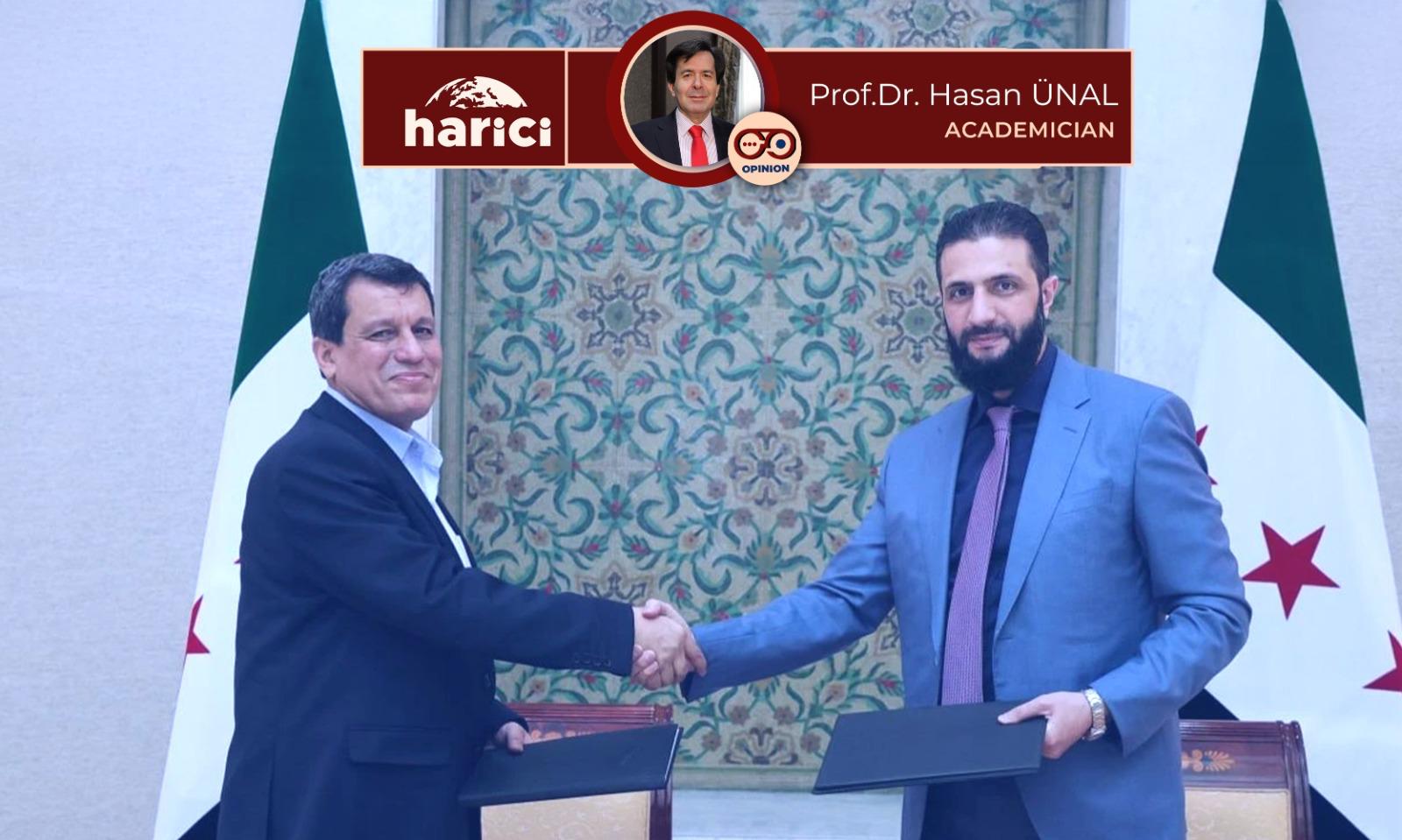
The news broke like a bombshell in media circles. The Syrian Democratic Forces (SDF), the umbrella organization for the PKK/PYD (which is known as the PKK in Syria and has been a primary concern for Türkiye in recent years), reached an agreement with Ahmad al-Sharaa, the leader of Hayat Tahrir al-Sham (HTS) and the current Syrian President (formerly known as al-Jolani). Starting from the evening of Monday, March 10th, when the news hit agencies, the media erupted with a range of reactions, from claims of the PKK/PYD’s self-dissolution to assertions of Syria’s territorial integrity being secured. Some commentators even suggested this was a rejection of federation, a new setback for Israel, and a significant success for Türkiye. The atmosphere recalled the period following Assad’s departure on December 8, 2024, when there was talk of conquering the neighbouring country, even going so far as to assign license plate numbers to Syrian and other Middle Eastern cities.
What does the agreement entail?
However, the eight-article agreement text does not present a particularly optimistic outlook. In fact, a careful examination reveals that Syria has been (or is being) reshaped into an undeclared federation. The very act of the SDF signing an agreement with the Syrian government implies the construction of a federal structure. On one side stands a state, Syria, and on the other, a structure that perceives itself as a state (or on the path to statehood) and is considered a terrorist organization by Türkiye. In other words, the SDF, with the PYD/PKK at its core, is the entity that has entered into an agreement with the Syrian state. Typically, states engage in agreements with other states or international organizations. The fact that the SDF and the Syrian state have signed an agreement/reconciliation text warrants careful consideration.
The first article of the agreement, stating that “the right to merit-based representation and political participation in Syria, regardless of religious or ethnic origin, is guaranteed,” may initially appear positive. However, when considered alongside the subsequent article, which states that “the Kurdish community is recognized as an integral part of Syria and its constitutional rights are guaranteed,” it becomes evident that this contains serious issues. A federal structure is present, even if unnamed (pending the final Syrian constitution).
If a Kurdish community exists within Syria, and its existence is constitutionally recognized with its rights (the specifics of which will be defined in the constitution) guaranteed, other ethnic and sectarian groups will inevitably make similar demands. For instance, the Alawites, predominantly residing in Syria’s coastal region and recently subjected to horrific massacres by HTS, are likely to present similar demands. The same applies to the Druze community living in territories that Israel occupied and gained control over immediately after Assad left the country on December 8, 2024. In fact, Druze community leaders have repeatedly declared that they cannot live under a radical Islamic regime centered on HTS and would prefer to join Israel if forced to do so. Considering that the southern part of the Druze region, the Golan Heights, was occupied and annexed by Israel in the 1967 war (despite being Syrian territory under international law), the seriousness of their threats becomes clearer. It should be emphasized that Syria is being steered towards a federation that could lead to partition. In such ethnic, religious, and sectarian federations, quotas allocated to these groups, rather than merit, will likely be more influential in matters such as personnel recruitment.
The reference to the Kurdish community as an integral part of the Syrian state, with all its constitutional rights, including citizenship, guaranteed, signifies a significant step towards federation. The existence of a “Kurdish people” and the mention of their constitutional rights imply that the constitution should be drafted on the basis of “peoples.” One of the main articles of the Syrian constitution will likely begin with a sentence such as, “The Syrian state is the common state of Arabs, Kurds, Druze, Alawites…” or “Syria is the common country of Arabs, Kurds, Druze, Alawites…”
In this scenario, it can be assumed that Syria will consist of at least four or five autonomous or federated structures. These structures will likely have their own parliaments, internal administrations (including public order forces like police and gendarmerie), judicial systems, and “self-defense forces,” as the PKK prefers to call them. In essence, we can anticipate four or five autonomous/federated units resembling the fragmented and largely independent Kurdish Federal Government of Northern Iraq. It should also be underscored that it is improbable for such a state, formed with a very weak central government in line with Israel’s interests, to possess a substantial army. It would be overly optimistic to believe that in such a federation, named or unnamed, everyone would coexist harmoniously, with different peoples treating each other with utmost respect and avoiding conflicts over power-sharing. The likelihood of such ethnic, religious, and sectarian federal structures, which are inherently fragile, surviving peacefully in a region like the Middle East, where Israel and the US are constantly involved, is extremely low. The possibility of these structures being drawn into disintegration through civil war or territorial conflicts, triggered by external manipulation of internal disputes, should not be underestimated.
The fifth article of the agreement, stating that “the Syrian state shall ensure the return of all displaced refugees to their former places (villages and towns) and guarantee their security,” might initially seem to address the return of refugees who have fled Syria. However, this may not be the case. If this article concerned refugees outside Syria, its inclusion in this agreement would be unnecessary, as such matters fall entirely under the jurisdiction of the Syrian central government. If it referred to refugees from PKK/PYD-controlled areas who were forced to flee their homes due to ethnic cleansing, many of whom are outside the country, this sentence would need to be worded differently. It appears that the “refugees” in question are PKK/PYD groups who have been forced to flee from Turkish-controlled territory, and their return to this territory is being guaranteed by the Syrian state. This could be a precursor to forcing Türkiye out of the territory under its control in the coming years.
Since 2011, Türkiye’s Syria policy has not consistently prioritized national interests. On one hand, Türkiye rightly used force to prevent the PKK/PYD from attaining the status of a puppet autonomous state. On the other hand, Türkiye did everything possible to weaken and ultimately overthrow the Assad regime. Ultimately, the Assad regime was overthrown, and the PKK/PYD has come very close to achieving significant autonomy. The prospects of Syria’s fragmentation and eventual disintegration are not distant.
During the Assad (Baath) regime, as the PKK/PYD faced pressure from Türkiye, they repeatedly approached the Damascus government, stating, ‘Give us autonomy, let us join you and fight together against Türkiye.’ [Assad’s government] said, “You are traitors who cooperate with America. Syria is a nation-state and has a unitary structure. We will not give you or anybody else anything that will disrupt this constitutional structure, we can only enact some regulations for local administrations in the 2012 constitution, and that will apply to all of Syria, not just you.”‘. Ultimately, there is now a Syria that some claim Türkiye conquered, a government described as “our boys,” and the PKK/PYD has signed a treaty with it that includes extensive autonomy. This raises the question: Was this Türkiye’s ultimate objective?
OPINION
Europe: Transitioning from strategic dependence on the U.S. to strategic self-preservation
Published
2 weeks agoon
15/03/2025By
Ma Xiaolin
On March 5, French government spokesperson Sophie Primas stated that French President Emmanuel Macron, Ukrainian President Volodymyr Zelensky, and British Prime Minister Keir Starmer were considering a joint visit to the United States, with the visit expected to be completed “in the short term.” If this plan materializes, it will mark the second time these three European leaders visit the White House within a short period following Donald Trump’s re-election as president. Previously, Macron and Starmer had attempted to persuade Trump in person to value the traditional transatlantic relationship and maintain U.S.-Europe alignment on the Russia-Ukraine war, but with little success. Zelensky’s visit to the White House, however, turned into a diplomatic disaster, with both sides engaging in heated arguments that ended on bad terms. Zelensky’s delegation even left the White House hungry, as they were asked to leave without partaking in the lavish luncheon prepared by their host.
The three White House summits marked another diplomatic “Waterloo” for Europe after its “darkest moment” at the Munich Security Conference. At Munich, European leaders were publicly humiliated by U.S. Vice President J.D. Vance and were shocked to witness the U.S. engaging in high-level diplomacy with Russia. Despite their dismay, some still held onto illusions. However, after experiencing Trump’s stern lecturing at the White House, European leaders have become much more pragmatic and realistic. Therefore, before seeking another visit to the White House, France and the UK have adjusted their previous stances on the Russia-Ukraine war, now supporting ceasefire negotiations, while Ukraine has obediently stated its willingness to transition from war to peace “under U.S. leadership” and sign a “minerals-for-security” agreement with the U.S.
European leaders are striving to repair the U.S.-Europe relationship, which has been severely fractured by “Trump’s new policies,” in an effort to preserve “peace under American rule.” They aim to ensure continued transatlantic cooperation through three key ties: traditional values, the transatlantic political alliance, and the NATO military alliance, while maintaining a shared destiny, shared interests, and shared moral values. However, Trump 2.0 is likely to bring more sadness, harm, and worries to his European allies. To some extent, European countries have realized that they must adapt to the historical turning point of a “the profound changes unseen in a century.” They must accept the “historical end” of the U.S.-Europe partnership and quickly achieve strategic awakening, gradually breaking free from their strategic dependence on the U.S. while strengthening strategic autonomy, diplomatic independence, military self-reliance, and strategic self-preservation.
Europe’s strategic awakening follows an undeniable historical and practical logic. First, no powerful nation remains dominant forever, no absolute center of power is eternal, and no strong ally is unbreakable. This is a lesson from thousands of years of human history, frequently discussed by Western politicians, and confirmed by more than ten shifts in global power centers since the 1500s.
Moreover, under “Trumpism,” the U.S. is irreversibly shifting toward a new era of isolationism, mercantilism, and Monroe Doctrine-style policies, focusing on self-revolution, self-redemption, and making itself “great again.” It has grown weary of acting as the world’s leader, fulfilling international obligations, bearing multilateral responsibilities, and financing global initiatives. The U.S. is even reluctant to continue practicing the evangelical “Messianic” spirit of benevolence and global salvation. Europe must recognize that after a century-long alliance, the U.S. and Europe are now at a crossroads where separation is inevitable. More precisely, the U.S. is actively dismantling the global order and rule-based system it built and sustained for a century—without caring about Europe’s grievances or how it complains tearfully about the break-up.
Europe must now consider how to end its strategic dependence on the U.S. Historically, the U.S. was a “bastard child” of European civilization on the North American continent. However, in the process of breaking away from its colonial “sinful womb,” this “illegitimate offspring” unexpectedly became Europe’s ultimate lifeline and savior. Since its entry into World War I and subsequent victory, the U.S. has fought increasingly stronger wars, achieving an unprecedented level of global hegemony. It has continuously shaped Europe’s fate: without strong American leadership and generous support, Europe could not have swiftly defeated the Axis powers, rapidly recovered from the devastation of two world wars, collapsed the Soviet-led Cold War adversaries, or maintained its dominance in Western education, science, technology, economy, and soft power.
A century of dependence has conditioned Europe into a “fatherly” or “motherly” psychological attachment to the U.S., fostering both admiration and reliance. Despite frequent complaints, disputes, and protests against this overbearing “patriarch,” Europe remains unable to break free. However, the time has come for Europe to awaken from this dependence and embrace strategic independence.
Strategic Autonomy: Europe’s Honor and Dream
Strategic autonomy is not only Europe’s honor and dream, but also one of its primary goals in the pursuit of unity. Historically, Europe has long been unable to act independently due to its internal fragmentation, where numerous feudal states coexisted. Even after the establishment of the Westphalian system, Europe still found itself entangled in two world wars. After World War II, Europe was further drawn into the grand geopolitical game of the Cold War between the United States and the Soviet Union. Being weak and vulnerable, Europe had to rely on the protection of a strong United States to ensure its security and development.
With the collapse of the Cold War order and the disappearance of the Soviet Union, Europe’s dream of unification became increasingly tangible. Through five rounds of EU enlargement, most European countries were brought under the same umbrella. Simultaneously, NATO’s continued eastward expansion pushed Europe’s security frontiers deep into Russia’s traditional strategic heartland.
As the 21st century began, Europe’s strategic environment underwent a dramatic improvement. It not only emerged from the historical shadow of the Soviet threat but also witnessed new developments in the United States—where growth stagnated, and signs of contraction and decline appeared. Thus, strategic autonomy became a new European aspiration, gaining widespread support from nations and citizens alike. However, the U.S. establishment, particularly represented by the Democratic Party, has continued efforts to keep Europe under White House leadership through shared values, traditional alliances, and military partnerships. To achieve this, the U.S. carefully orchestrated the “Ukraine trap,” using Russia as a “scarecrow” to frighten many small European nations, thereby forcing them to remain under the American hegemonic umbrella and continue following Washington’s lead.
Trump’s new policies actually present Europe with a historic opportunity and a strategic window to break free and establish true self-reliance. However, Europe still lacks the necessary strategic confidence and preparedness. It continues to seek leverage from the United States and, in some cases, even prefers to remain under American strategic protection. The inevitable outcome of this approach is that Europe will eventually find itself standing on shaky ground.
Strategic Autonomy: Independent Path Internally, Diplomatic Independence Externally
Strategic autonomy means choosing an independent path domestically and achieving diplomatic independence externally. Europe has historically been the birthplace of modern international relations and diplomacy, serving as both the intellectual foundation and early model for American diplomacy. As a master of geopolitical maneuvering, Europe has long been a dominant player in global affairs.
However, diplomacy must be backed by national power—particularly economic and military strength. This fundamental rule has often left Europe, despite its past glory, with a form of “crippled diplomacy.” With the exception of a few cases such as France, most European countries have historically aligned themselves with U.S. policy, often adhering to White House directives. They have been required to continuously coordinate their policies and even political stances with Washington to ensure transatlantic alignment, thereby creating a synchronized diplomatic chorus.
After the Cold War, the acceleration of global multipolarity provided Europe with greater diplomatic space and maneuverability. European nations, based on their own interests or the collective interests of the EU, have at times pursued diplomatic policies that diverged from or even opposed those of the United States. This growing diplomatic independence, driven by strategic autonomy, has become a concrete manifestation of Europe’s pursuit of unity and strength. However, it has also inevitably become the primary source of conflict, disagreement, and friction between Europe and the U.S.
During Trump’s first term (Trump 1.0), diplomatic disputes between the U.S. and Europe emerged, particularly over issues related to values. However, these differences were quickly mended during Joe Biden’s administration. With Trump’s return to power (Trump 2.0), the transatlantic diplomatic relationship has once again diverged—not only in ideology but also in paradigm. Disputes over trade wars and the Russia-Ukraine conflict have further widened the gap, to the point where Europe and the U.S. are now moving in entirely different directions. Ironically, this divergence will, in turn, reinforce Europe’s diplomatic independence.
Europe’s Greatest Crisis: The Security Dilemma
Europe’s most pressing crisis is its security dilemma—specifically, whether it can establish an independent and powerful military force outside the NATO framework and achieve military self-sufficiency, including the ability to confront its traditional adversary, Russia, on its own.
After the Cold War, Europe embraced NATO, an alliance centered around the United States. The essence of this arrangement was to leverage American military power to neutralize the Soviet threat, prevent Germany’s resurgence, and ultimately avoid another world war.
For more than half a century, the U.S. has maintained a strong military presence in Europe, with numerous bases and a large troop deployment. Washington has also consistently covered over half of NATO’s defense budget, with its military expenditures exceeding 3% of its GDP annually. This long-standing reliance on American security guarantees has not only led Europe to neglect its own military capabilities but has also become an unsustainable burden for the U.S.
With Trump’s Return, NATO’s Easy Days Under U.S. Protection Are Over
With Trump back in office, NATO can no longer enjoy the luxury of relying on the U.S. security umbrella. The alliance must now assume the primary responsibility for its own defense. During his first term, Trump pressured NATO members to increase their military spending to 2% of GDP. In his second term, he is now demanding it be doubled to 5%, significantly reducing the burden on the U.S.
For Europe, achieving military independence and self-reliance has become an urgent reality. In terms of conventional troop numbers, weaponry, strategic capabilities, and defense industry strength, Europe remains far behind the U.S. in the short term. It may even struggle to counterbalance Russia. As the Trump administration plans to abandon Ukraine, and Europe is forced to prepare for defending Ukraine—or even itself—alone, serious questions arise: How quickly can the EU establish its own military force? Can it rely on the nuclear umbrella provided by the UK and France?
The European “Rearmament” Plan
On March 4, in response to the U.S. cutting off weapons, intelligence support, and possibly even satellite links to Ukraine, the European Union announced a plan to raise approximately €800 billion to “rearm Europe” and establish a secure and resilient defense framework. Under Chancellor Olaf Scholz, Germany—after nearly 70 years of pacifism—has doubled its defense budget, surpassing 2% of GDP. The newly elected government coalition, led by Friedrich Merz, is set to propose a bill in the German Parliament next week to establish an extra-budgetary fund of €500 billion under the guise of infrastructure investment, but ultimately aimed at further increasing defense expenditures.
As founding members of NATO and permanent members of the UN Security Council, Britain and France are stepping up as Europe’s natural leaders. While attempting to salvage the crumbling U.S.-Europe geopolitical marriage, they are also actively strategizing Europe’s post-“U.S. withdrawal” defense framework. Discussions include “nuclear sharing” and the potential formation of a European “security force” to support Ukraine.
Observers suggest that the EU and its member states are about to enter an unprecedented period of multilateral and bilateral security negotiations, scrambling to fill the “three-dimensional vacuum” left by the U.S. abandoning its NATO leadership responsibilities—or potentially withdrawing from NATO altogether. This vacuum includes historical disillusionment, present uncertainty, and psychological panic over the future.
Trump 2.0: A Long-Term Shift?
Theoretically, Trump’s second term could last eight years, and “Trumpism” might persist even longer. In just two months since his return, Trump has already withdrawn from agreements, abandoned allies, and broken diplomatic trust—all with strong momentum that is likely to continue and expand.
This trajectory threatens to overturn the entire post-WWII global security system, international governance framework, and global order. Almost overnight, the United States—once Europe’s unwavering ally and “big brother”—has morphed into a familiar stranger, a tariff war instigator, an ideological adversary, and even a strategic rival.
Meanwhile, Europe is left to navigate an uncertain path alone, and the “Western world” as we know it appears to have fractured into two distinct entities: the U.S. and Europe. The EU was completely unprepared for such a historic and profound transformation in transatlantic relations. European Council President Ursula von der Leyen even described it as a “watershed moment.”
The Inevitable U.S.-Europe Split
The transatlantic relationship is now undergoing systematic dismantling, revision, and restructuring. European leaders are investing enormous efforts in trying to restore the relationship to normalcy. However, the ideological and economic differences between the U.S. and Europe have become so vast that they are likely to drift further apart, potentially reaching the point of no return.
As history has shown, long periods of unity are followed by division, and long periods of division eventually lead to reunification. This historical cycle is playing out once again.
Prof. Ma is the Dean of the Institute of Mediterranean Studies (ISMR) at Zhejiang International Studies University in Hangzhou. He specializes in international politics, particularly Islam and Middle Eastern affairs. He previously worked as a senior Xinhua correspondent in Kuwait, Palestine, and Iraq.

South Korean opposition leader Lee Jae-myung acquitted in election law case

Was Glezman’s release a lollipop given to the US?

Fidan and Rubio discuss Syria, Gaza, and defense in US meeting

Beijing’s energy rules threaten Nvidia H20 chip sales in China

Hamas retains guerrilla capacity and political role in Gaza, says US intelligence
MOST READ
-

 DIPLOMACY2 weeks ago
DIPLOMACY2 weeks agoCK Hutchison shares fall after China criticizes Panama port sale
-

 DIPLOMACY2 weeks ago
DIPLOMACY2 weeks agoCanada appoints non-resident ambassador, pledges $84 million in aid to Syria
-

 ASIA2 weeks ago
ASIA2 weeks agoTaliban denies Pakistan claims Jaffar Express “terrorists” were in contact with leaders in Afghanistan
-
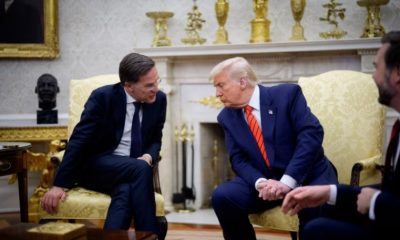
 EUROPE6 days ago
EUROPE6 days agoEurope plans for US absence in NATO with 5-10 year strategy
-
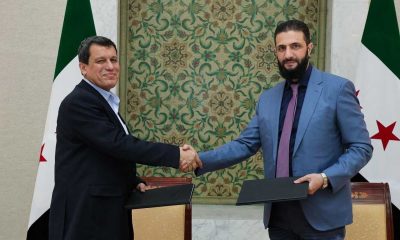
 MIDDLE EAST2 weeks ago
MIDDLE EAST2 weeks agoNew Syrian constitution draft sparks controversy over Islamic law
-

 AMERICA2 weeks ago
AMERICA2 weeks agoUS tariffs on steel and aluminum set to impact $150 billion market
-

 EUROPE2 weeks ago
EUROPE2 weeks agoRheinmetall surpasses Volkswagen in market value as defense focus grows
-

 ASIA1 week ago
ASIA1 week agoChina’s AsiaInfo expands with DeepSeek-powered AI

